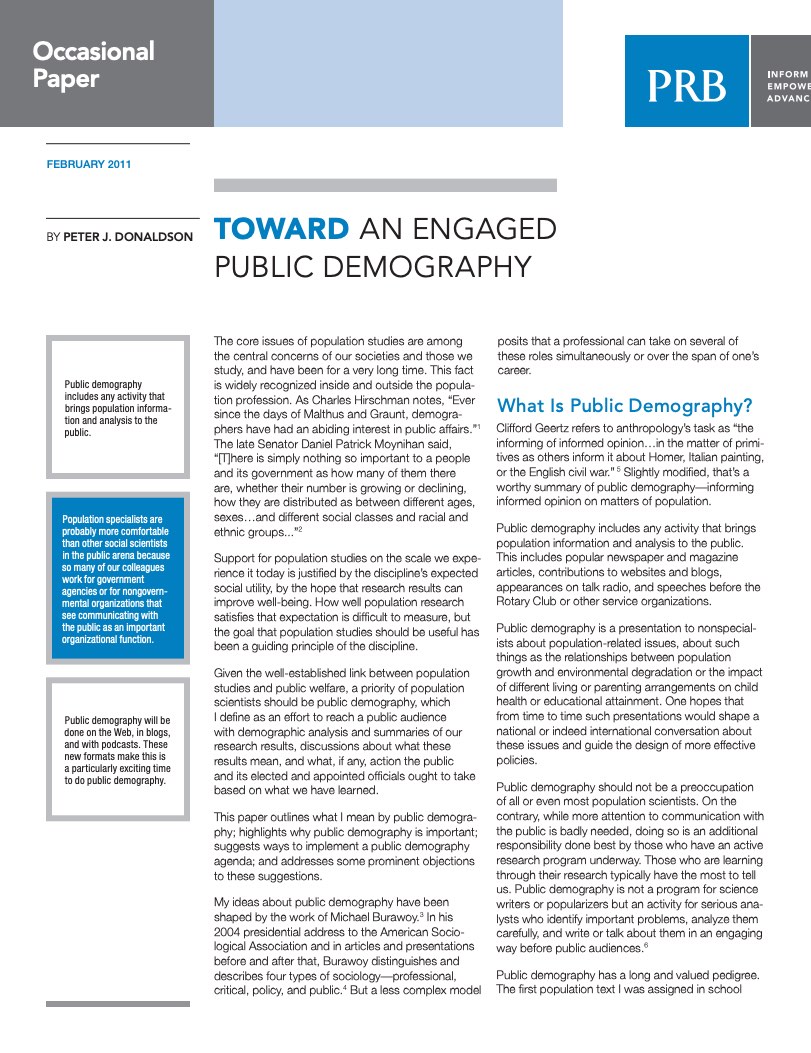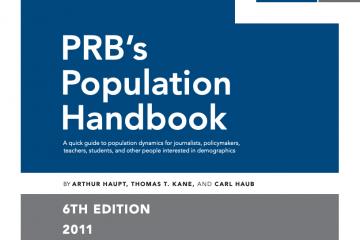
Toward an Engaged Public Demography
Date
February 18, 2011
Author
Focus Area
(February 2011) The core issues of population studies are among the central concerns of our societies and those we study, and have been for a very long time. This fact is widely recognized inside and outside the population profession. As Charles Hirschman notes, “Ever since the days of Malthus and Graunt, demographers have had an abiding interest in public affairs.”1 The late Senator Daniel Patrick Moynihan said, “[T]here is simply nothing so important to a people and its government as how many of them there are, whether their number is growing or declining, how they are distributed as between different ages, sexes…and different social classes and racial and ethnic groups…”2
Support for population studies on the scale we experience it today is justified by the discipline’s expected social utility, by the hope that research results can improve well-being. How well population research satisfies that expectation is difficult to measure, but the goal that population studies should be useful has been a guiding principle of the discipline.
Given the well-established link between population studies and public welfare, a priority of population scientists should be public demography, which I define as an effort to reach a public audience with demographic analysis and summaries of our research results, discussions about what these results mean, and what, if any, action the public and its elected and appointed officials ought to take based on what we have learned.
This paper outlines what I mean by public demography; highlights why public demography is important; suggests ways to implement a public demography agenda; and addresses some prominent objections to these suggestions.
My ideas about public demography have been shaped by the work of Michael Burawoy.3 In his 2004 presidential address to the American Sociological Association and in articles and presentations before and after that, Burawoy distinguishes and describes four types of sociology—professional, critical, policy, and public.4 But a less complex model posits that a professional can take on several of these roles simultaneously or over the span of one’s career.
Peter J. Donaldson is president of the Population Council, and was president of the Population Reference Bureau.
References
-
- Charles Hirschman, “The Future of Demography,” Asian Population Studies 4, no. 3 (2008): 233-34.
-
- Daniel Patrick Moynihan, “The Most Important Decision-Making Process,” Policy Review 1 (Summer 1977): 89-93.
-
- Burawoy’s public sociology publications and comments from others, accessed at http://burawoy.berkeley.edu/PS.htm, on Aug. 27, 2008.
-
- Michael Burawoy, “For Public Sociology,” American Sociological Review 70, no. 1 (2005): 4-28. The characteristic activity of professional sociology is basic research—the effort to advance theoretical and empirical knowledge within the framework of the discipline’s scientific norms. Critical sociology deconstructs and explores paradigm shifts. Policy sociology is concerned with applied research and concrete questions about public policies or service programs. Public sociology focuses on public interest and producing material that addresses the public’s concerns. A great deal of what demographers do is on the border between what Burawoy defines as “professional” and “policy” work. Formal demography, biometrics, the development of better methods and data collection procedures aside, demography is about issues of public concern. Think of the research of scholars such as Linda Waite on marriage, Sara S. McLanahan on children, or Douglas Massey on immigration.

 ">
">


